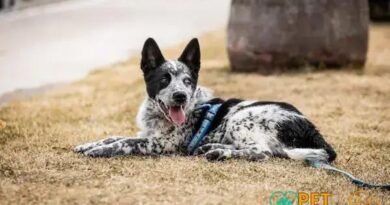What is advanced obedience training
What is Advanced Obedience Training?
Advanced obedience training is a specialized form of dog training that goes beyond basic commands and behaviors. It focuses on enhancing a dog’s ability to respond to complex commands and perform tasks with precision. This type of training is ideal for dogs that have already mastered basic obedience skills and are ready to take their learning to the next level. The goal is to create a well-mannered companion that can follow commands in various environments, making it a valuable skill for both the dog and the owner.
Benefits of Advanced Obedience Training
Engaging in advanced obedience training offers numerous benefits for both dogs and their owners. For dogs, it provides mental stimulation, helping to prevent boredom and destructive behaviors. For owners, it fosters a deeper bond with their pets through shared activities and achievements. Additionally, advanced training can improve a dog’s social skills, making them more adaptable in different situations, whether at home, in public, or around other animals.
Key Components of Advanced Obedience Training
Advanced obedience training typically includes a variety of components such as off-leash training, advanced commands, and specialized skills. Off-leash training allows dogs to respond to commands without the constraint of a leash, promoting trust and reliability. Advanced commands may include tasks like “go to your place,” “stay in position,” or “heel” with precision. Specialized skills can encompass activities like agility training, scent work, or even tricks that showcase a dog’s intelligence and capabilities.
Training Techniques Used in Advanced Obedience
Various training techniques are employed in advanced obedience training, including positive reinforcement, clicker training, and desensitization. Positive reinforcement involves rewarding desired behaviors to encourage their repetition, while clicker training uses a distinct sound to mark correct actions, making it easier for dogs to understand what is expected. Desensitization helps dogs become accustomed to distractions, ensuring they can maintain focus in challenging environments.
Choosing the Right Trainer for Advanced Obedience
Selecting a qualified trainer is crucial for successful advanced obedience training. Look for trainers who have experience with advanced techniques and a solid understanding of canine behavior. It’s also beneficial to choose a trainer who uses positive reinforcement methods, as these approaches are generally more effective and humane. Reading reviews and seeking recommendations from other dog owners can help you find the right fit for your training needs.
Common Challenges in Advanced Obedience Training
While advanced obedience training can be rewarding, it may also present challenges. Some dogs may struggle with distractions, making it difficult for them to focus on commands. Others may exhibit stubbornness or resistance to new tasks. Patience and consistency are key in overcoming these challenges. It’s important to break down complex commands into smaller, manageable steps and to celebrate small victories along the way.
Setting Goals for Advanced Obedience Training
Establishing clear goals is essential for effective advanced obedience training. Goals should be specific, measurable, achievable, relevant, and time-bound (SMART). For instance, you might aim for your dog to master a particular command within a month or to successfully perform a series of tricks during a family gathering. Setting goals not only provides direction but also helps track progress and maintain motivation throughout the training process.
Maintaining Skills After Training
Once advanced obedience training is complete, it’s important to maintain the skills your dog has learned. Regular practice sessions, even if brief, can help reinforce commands and keep your dog engaged. Incorporating training into daily routines, such as during walks or playtime, can also help maintain skills. Additionally, participating in dog sports or activities can provide ongoing challenges and opportunities for your dog to showcase their abilities.
Advanced Obedience Training for Specific Breeds
Different dog breeds may respond uniquely to advanced obedience training based on their temperaments and energy levels. For example, working breeds like Border Collies may excel in agility and complex tasks, while more laid-back breeds may require a gentler approach. Understanding your dog’s breed characteristics can help tailor the training process to suit their needs and maximize their potential.
Conclusion: The Journey of Advanced Obedience Training
Advanced obedience training is not just about teaching commands; it’s about building a strong partnership between you and your dog. The journey involves patience, consistency, and a commitment to ongoing learning. As you and your dog progress through advanced training, you’ll not only enhance their skills but also deepen your bond, creating a harmonious relationship built on trust and understanding.



